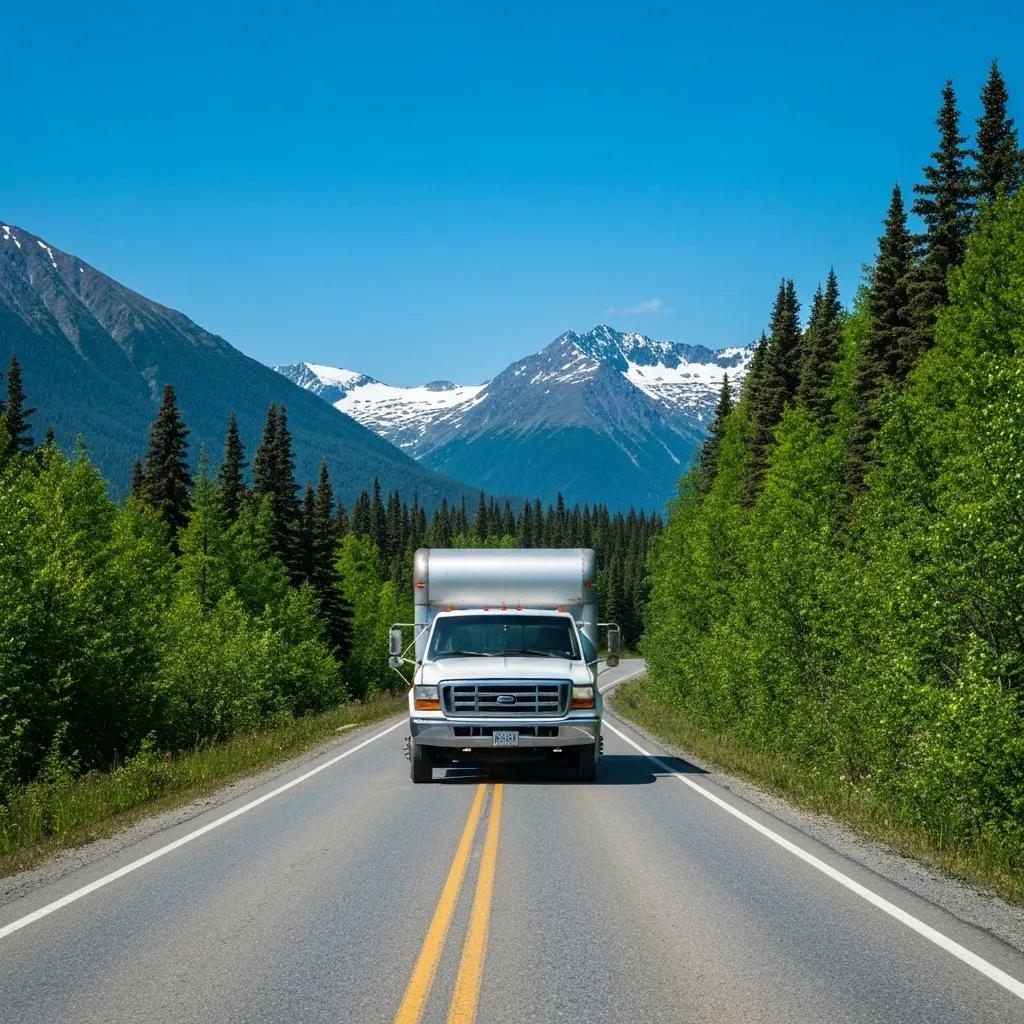My Guide to Moving and Storage in Hawaii: Budget Strategies

What Are the Average Moving Considerations From Hawaii and Alaska?
Long-distance moves from island or remote regions involve distinct considerations for freight, container handling, and weight-based tariffs. The baseline moving cost definition includes transportation from port or terminal plus delivery door-to-door. Since both Hawaii and Alaska depend on ocean or air freight, carriers calculate expenses by shipment weight, container volume, and distance. For example, a 2,000-lb household load shipped from Honolulu to Los Angeles averages.
How Much Does Shipping Household Goods From Hawaii Typically Cost?
Shipping from Hawaii involves container handling considerations, port surcharges, and inland trucking once on the mainland.
- Port Handling Fee: A standard fee per container
- Ocean Freight: A standard fee per 20′ container
- Inland Trucking: A per mile rate
Summary: Port and ocean freight combine with trucking to form the core shipping expense, requiring coordination across carriers and terminals.
Average Moving Considerations Moving considerations from Hawaii and Alaska are significantly impacted by weight, distance, and the need for specialized transportation methods like ocean or air freight. For example, a 2,000-lb household load shipped from Honolulu to Los Angeles can range in price. These considerations include port handling fees, ocean freight, and inland trucking, which require careful coordination. You can find essential tips for a smooth transition.
What Is the Average Cost of Moving From Alaska to the Mainland?
Alaska shipments often travel via Seattle or Anchorage, with similar weight-and-distance billing rules.
- Anchorage to Seattle Ocean Freight: A standard fee per container
- Drayage and Crane Service: A fee per lift
- Final Leg Trucking: A per mile rate
Summary: Crane lifts and drayage amplify base rates, underlining the importance of consolidated scheduling.
How Do Distance and Weight Affect Long-Distance Moving Expenses?
Moving costs scale linearly with weight and non-linearly with distance when crossing state or maritime zones.
- Weight Brackets: Various per-pound rates apply based on total weight.
- Distance Impact: Cross-state or cross-water travel may incur additional segment fees.
Summary: Lower per-lb rates for heavier loads may be counterbalanced by extra segment fees; accurate weight estimation minimizes surprises.
What Hidden Costs Should You Expect When Moving From Hawaii or Alaska?
Beyond base shipping, regulatory, customs, and service surcharges can inflate your final bill. Long-distance moves from non-contiguous U.S. states often trigger specialized fees requiring early budget buffers.
Which Fees Are Often Overlooked in Long-Distance Moves?
Movers may add for their moving services:
- Fuel Surcharges that vary monthly.
- Port Congestion Fees when terminals exceed capacity.
- Crane and Drayage Fees for container handling.
Summary: Factoring a contingency for these line items can prevent budget overruns.
How Do Customs, Taxes, and Regulations Impact Moving Costs?
Household goods shipments from Alaska sometimes clear customs. Though no duty, paperwork processing can incur a fee. In Hawaii, certain island-to-island moves require compliance permits.
Summary: Government processing fees add modest charges but require lead time to avoid delays and fines.
Hidden Moving Costs Hidden costs, such as fuel surcharges, port congestion fees, and crane and drayage fees, can significantly increase the final moving bill. Factoring in a contingency for these items can prevent budget overruns. Customs, taxes, and regulations also impact costs, with paperwork processing potentially incurring a fee.
What Additional Charges Can Storage and Packing Services Add?
Long-term storage at mainland warehouses run per cubic foot monthly. If storage or full packing is essential, reserve a portion of your budget for these support services.
How Can You Create an Effective Budget for Your Long-Distance Move?
An effective budget breaks costs into core categories, applies realistic estimates, and tracks actual spending through each phase.
What Are the Essential Budget Categories for Moving From Hawaii or Alaska?
Moving budgets typically include:
- Transportation: shipping, drayage, trucking
- Packing Services and Materials: boxes, labor, protective wrap
- Storage: short-term or long-term warehousing
- Insurance: valuation coverage, cargo insurance
- Incidentals: fuel, tolls, tips
Summary: Dividing expenses across these five categories ensures comprehensive planning and easier adjustments.
How Do You Estimate Transportation and Service Costs Accurately?
Gather at least three quotes each for freight and local movers. Use average weight/tariff tables to project cost ranges. Factor in seasonal demand by comparing peak vs. off-peak rates.
Summary: Triangulating multiple quotes with weight-and-distance data provides a realistic cost band.
What Tools and Resources Help Track Moving Expenses?
Digital spreadsheets, budgeting apps, and carrier portals enable real-time cost logging. Free online calculators from major moving services allow quick scenario estimates for weight and distance.
Summary: Using integrated tracking tools reduces oversights and ensures you stay within budget thresholds, read our essential tips for a smooth transition.
Budgeting for Long-Distance Moves Creating an effective budget involves breaking down costs into core categories such as transportation, packing services, storage, insurance, and incidentals. Gathering multiple quotes for freight and local movers and using online calculators can help estimate costs accurately. Digital spreadsheets and budgeting apps also enable real-time cost logging.
What Money-Saving Tips Can Reduce Your Moving Costs From Hawaii or Alaska?
Cost management begins with rationalizing services and timing moves to leverage market dynamics.
How Can You Save on Packing and Moving Supplies?
Obtain free used boxes from local retailers or community listings. Wrapping bulky items with blankets instead of bubble wrap reduces material fees. Booking labor-only services lets you handle packing yourself at lower labor rates.
Summary: Creative supply sourcing cuts material and labor line items significantly.
When Is the Best Time to Schedule a Move for Lower Rates?
Off-peak scheduling (mid-month, weekdays, winter months) often yields lower rates due to reduced demand. Book at least 45–60 days in advance to secure promotional discounts.
Summary: Timing moves outside peak season unlocks deeper carrier discounts.
How Does Choosing Full-Service vs. DIY Moving Affect Your Budget?
Full-service movers handle packing, loading, and unloading but carry higher per-lb premiums. A DIY container rental with local labor can save if you manage packing and basic loading.
Summary: Blending DIY container use with carrier pickup services balances convenience and savings.
How Do Moving Services From Hawaii and Alaska Differ From Mainland Moves?
Island and remote shipments require specialized handling, unique scheduling rules, and transparent pricing models to mitigate complexity.
What Specialized Services Are Available for Island and Remote Moves?
Entity Attribute Value Roll-on/Roll-off Vessels Loading Mechanism Drive-on container decks Air Freight Speed 3–7 business days Consolidated Container Cost Efficiency Shared cargo reduces individual rates Oversized Cargo Handling Required Equipment Crane lifts and flat-rack containers
Summary: Choosing between RORO, air freight, and consolidation hinges on urgency, budget, and shipment dimensions.
How Do Shipping Logistics Impact Scheduling and Costs?
Transit times fluctuate with port schedules, seasonal weather, and carrier capacity. Delays at island terminals often add per-day demurrage fees. Moving services are essential for efficient transit management.
Summary: Aligning move dates with vessel departure windows minimizes storage and demurrage surcharges.
Why Is Transparent Pricing Important for Long-Distance Moves?
Transparent itemized quotes build trust and prevent hidden fee disputes. Look for carriers that provide binding estimates—covering all line items in writing.
Summary: Binding quotes are the foundation for a predictable budget and stress-free relocation.
What Are the Best Practices for Avoiding Unexpected Moving Expenses?
Preventing surprise costs begins with proactive planning, thorough documentation, and clear carrier communication.
How Can You Identify and Negotiate Hidden Fees Before Moving?
Request full itemized estimates, ask about fuel, tax, or port surcharge adjustments, and negotiate cap limits on variable.
Summary: Negotiating fee caps and clarifying variable-rate items contains budget volatility.
What Documentation and Planning Help Prevent Cost Surprises?
Maintain inventories with weight and dimension data. Secure all permits in advance and confirm insurance coverage levels.
Summary: Complete inventories and valid permits align carrier billing with actual needs.
How Do Customer Reviews and Company Reputation Affect Budgeting?
Carriers with strong service records typically deliver fewer hidden charges and faster resolution of disputes, saving time and incidental fees.
Summary: Prioritizing reputable movers correlates with predictable billing and smoother execution.
Where Can You Find Reliable Quotes and Estimates for Moving From Hawaii or Alaska?
Accurate quote comparison requires structured data collection, consistent questions, and digital tools.
How Do You Compare Moving Company Quotes Effectively?
Use a standardized worksheet listing weight, distance, services, and fee categories. Compare estimates side by side.
Summary: A uniform comparison matrix reveals true cost differences and service gaps.
What Questions Should You Ask Moving Companies About Pricing?
- “Which surcharges are fuel-based and how often do they adjust?”
- “Are port or customs fees included or billed separately?”
- “Can you provide a binding all-inclusive estimate?”
Summary: Focused questions surface hidden fees and gauge pricing transparency.
How Can Online Tools Help You Get Accurate Moving Estimates?
Web calculators from established carriers integrate distance, weight, and container options into instant quotes. Aggregator platforms let you compare multiple providers in a single interface.
Summary: Leveraging digital tools streamlines quote gathering and aligns estimates with your budget.
You can also listen our podcast on SoundCloud:




